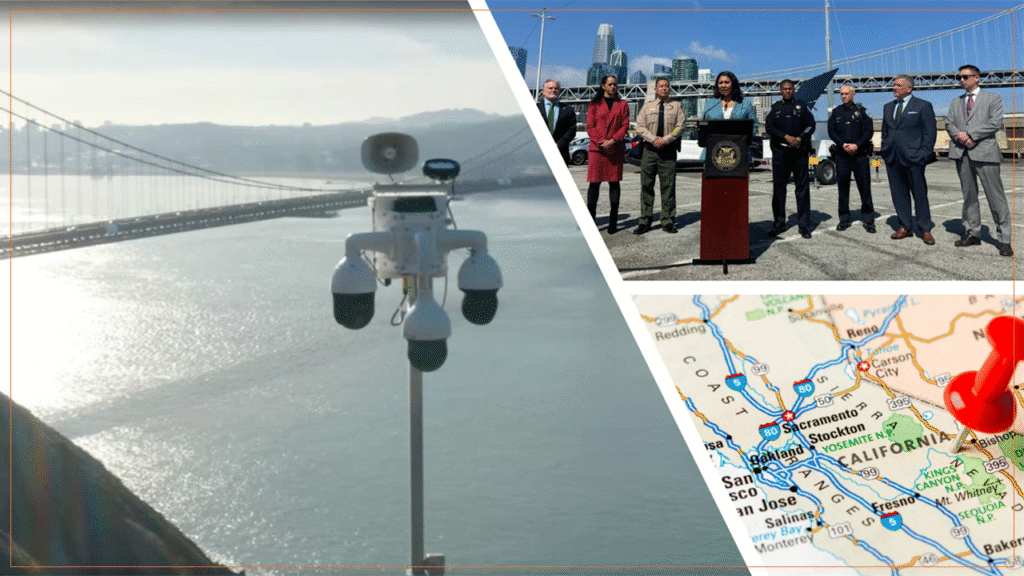Outdoor environments are among the most challenging spaces to secure, constantly shifting, exposed to risk, and often under-prioritized in security planning. As threats become more opportunistic and less predictable, organizations are rethinking how they safeguard sites that fall outside fixed, facility-based models.
In our work across Northern California, we’ve seen these complexities firsthand. Construction zones, logistics yards, and commercial parking areas operate on constantly shifting timelines. They are susceptible to recurring issues like theft, trespassing, and limited after-hours oversight, especially when temporary or mobile infrastructure is involved.
Traditional surveillance systems have their place, but they’re not always designed for environments in flux. Permanent installations take time, permitting, and resources that many fast-moving projects can’t afford to wait on.
To close these gaps, organizations are turning to mobile surveillance solutions designed for speed, adaptability, and reliable coverage in environments where conditions are anything but predictable.
A Regional Shift in Strategy
The growing interest in mobile surveillance reflects broader regional trends. In 2024, San Francisco launched a citywide initiative to deploy mobile surveillance units (MSUs).

These 22-foot towers are equipped with high-definition cameras, floodlights, speakers, and automated license plate readers and were placed in neighborhoods like the Mission District and Mid-Market.
The rollout followed the passage of Proposition E, which expanded public safety access to surveillance technologies.
By early 2025, the city had launched more than 240 drone-assisted missions and opened a Real-Time Investigation Center to integrate live camera, drone, and MSU footage. Officials reported over 500 arrests tied to these efforts, including more than 160 involving stolen vehicles.
While these technologies were deployed by city agencies, they signal a broader shift in how real-time monitoring and mobility are reshaping the security landscape.
For many private sector leaders across Northern California, the question has become clear:
If mobile surveillance strengthens public safety, why not extend its benefits to private property?
What Mobile Surveillance Looks Like
Mobile surveillance units are compact, trailer-mounted systems designed for rapid deployment and flexible repositioning. Most feature telescoping masts equipped with high-definition PTZ (pan-tilt-zoom) cameras, offering broad, adjustable coverage across open environments.
Many units operate on solar power with battery backups, making them effective in remote or infrastructure-limited settings. This blend of mobility and autonomy supports consistent monitoring where permanent systems aren’t practical.
Across suburban retail centers, construction zones, and industrial lots, mobile units are being used to deter theft, capture after-hours activity, and provide reliable video evidence when incidents occur.
Why Adoption is Growing
The rise in mobile surveillance adoption reflects a shift toward more flexible, responsive security strategies. Globally, the mobile video surveillance market is valued at $2.78 billion in 2025 and is projected to reach $4 billion by 2030,
Deployment speed is one of the most immediate advantages. Most units can be operational within 24 to 48 hours, eliminating the lead time required for permitting, cabling, or construction. This makes them well-suited for projects with tight timelines or evolving risk profiles.
Portability is equally important. As site conditions shift, from one construction phase to the next, or across seasonal operations, mobile units can be repositioned without disruption. This adaptability supports ongoing coverage without the constraints of fixed infrastructure.
Operational efficiency is another driver. Mobile systems allow teams to scale coverage where and when it’s needed, whether that means extending monitoring into after-hours periods, supplementing staff, or improving visibility in hard-to-patrol areas.
With reliable imaging, remote access, and solid performance in low-light conditions, these systems are being used to both deter incidents and support clear post-event analysis.
The Takeaway
As security risks grow more complex and operations become increasingly distributed, organizations are reassessing how they protect people, assets, and infrastructure.
Mobile surveillance has emerged as a scalable, technology-driven response to these shifting demands. While adoption has gained noticeable traction in Northern California, this isn’t a regional trend. Across the U.S. and globally, mobile systems are being deployed to fill critical coverage gaps, strengthen response capabilities, and support more agile risk management strategies.
The conversation has moved beyond proving effectiveness. The focus now is on integrating mobile surveillance at scale, across geographies, and in alignment with broader security objectives.
This shift is only gaining momentum, and the operational potential ahead is significant.
About the Author
Rob Chamberlin is President of Security 101 in Northern California, part of the nationwide Security 101 organization delivering consistent, high-quality commercial security solutions across the U.S. With over 20 years of industry experience, Rob leads regional efforts to help businesses design, install, and support integrated systems tailored to protect assets and ensure operational continuity.
.
Additional Resources
Video Overview
Follow Brilliance Security Magazine on LinkedIn to ensure you receive alerts for the most up-to-date security and cybersecurity news and information. BSM is cited as one of Feedspot’s top 10 cybersecurity magazines.


